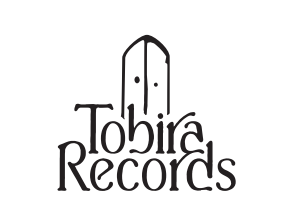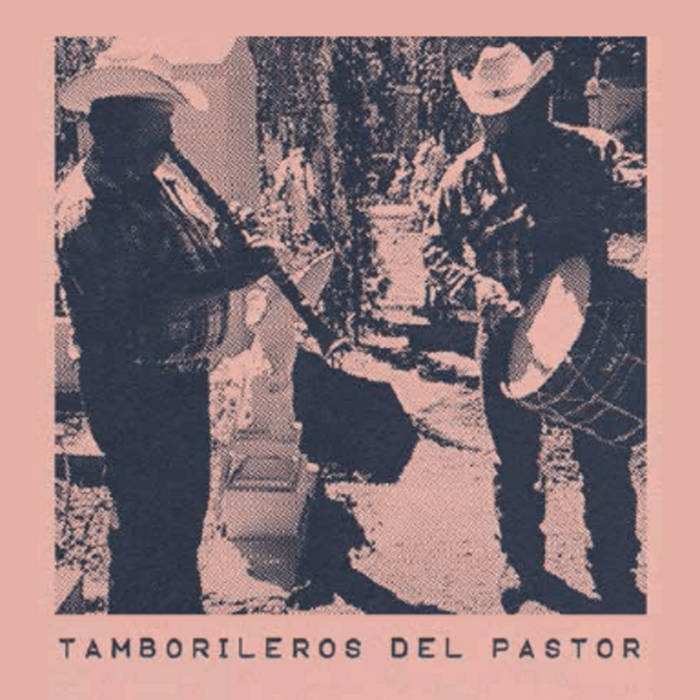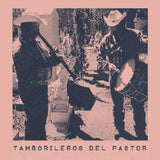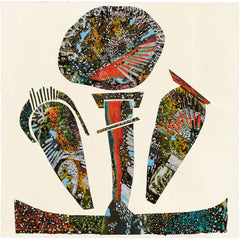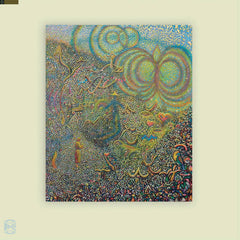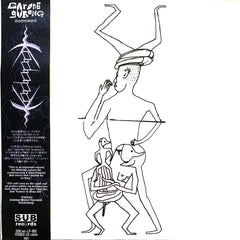Tamborileros del Pastor // Tamborileros del Pastor CD+ZINE
- Availability:
This CD+ZINE focuses on picota, a ritual music that has been passed down mainly in northeastern Mexico since around 1880.
This is a rare recording from a baptismal ceremony held in 1992. The 24-page 7" zine features essays and photos about the history of Picota. The cover color will be sent at random.
Below is a commentary by the label.
"Picota" or "tambola music" is reliably known to have been played in modern-day northeastern Mexico since at least 1880. This is the oldest musical expression known from the region. However, few artifacts have been found that provide clues as to its exact origin.
It is said that the picota was originally played in rain-making ceremonies on ranches in the border area between Tamaulipas and Nuevo Leon. A resident of the village of El Angelo says that when his grandparents planted sugar cane, beans, and corn in what is now the citrus region, where oranges, lemons, and grapefruit grow, they were doing so on territory to attract the spirits that coexist with them. He says he said so. Although many of the farmers were black and considered "otherworldly," they worked the land and supported their families just like anyone else. They also taught their colleagues how to honor the spiritual beings from the Gulf Coast who make their jobs easier with the significant rains that occur from June to September each year.
The tamborazo (another name for the picota) is used not only in rural farming, but also at celebrations of patron saints, typical of magical and pagan origins, as well as weddings, burials, processions, baptisms, and convites. The tradition of apprenticeship has continued to this day. Konvite is a modern expression of the indigenous mitote. It is a political procession in which the entire community participates, with Tambora at the head.
Nowadays, in some mountainous regions, the tamborazo is played during funerals, and it is said to accompany the soul of the deceased on its way to the underworld.
Many ancient genres, such as picota, have survived the threats of globalization such as urbanization, economic oppression, and land dispossession. As Manuel Peña Doria says, the singing dust does not return to dust. It feels eternal. "
Labels and other worksplease use this form. ///Click here to see more Transitory Tapes releases available at Tobira.
----------------------
CD packaged in a 24-page Spanish and English zine with background on Música de Tambora and the production of the recording. Front cover may vary.
tracklist:
- A_1 01:39
- A_2 01:04
- A_3 01:56
- A_4 02:12
- A_5 04:56
- B_1 01:43
- B_2 02:31
- B_3* 05:14
- B_4* 01:29
++
Transitory Tapes:
"In contemporary northeastern Mexico, it is known with certainty that the "picota" or "música de tambora" has been played since at least 1880. Although this makes it the oldest musical expression known from the region, few remnants have been found that reveal precise clues about its origin.
In the ranches of the border area that divides the states of Tamaulipas and Nuevo León, it is said that the picota was village originally played during ceremonies to attract rain. A resident of the El Anhelo recounts that his grandparents used to say that when sugarcane , beans and corn were planted in what is now known as the Citrus Region – a producer of oranges, lemons and grapefruit – these were territories of invocation of spirits that coexisted with them. Many of the peasants, who were mostly black, were thought to be "not of this world", though they plowed the land in the same way as the rest to subsist and support their families. They also taught their colleagues how to pay tribute to spiritual entities from the Gulf coast that year after year made their work easier with the arrival of prominent rains from June to September.
In addition to being interpreted in agricultural activities in the countryside, the tamborazo – another name for the picota – was played in typical patron saint celebrations of magical-pagan origin, weddings, burials, processions, baptisms and convites, and has been preserved into modernity thanks to a tradition of apprenticeship. The convite is the modern expression of the indigenous mitote. It is a political process, in which the entire community participates with the tambora at the front.
Currently, in some places in the mountains, it is said that the tamborazo is played at funerals to accompany the soul of the deceased on its journey to the underworld.
Of the picota and many other ancient genres that survive the threats of globalization such as urbanization, economic oppression and the dispossession of land, much remains to be rescued and studied. As Manuel Peña Doria says, the dust that sings does not return to dust. It has a touch of eternity."
Artist : Tamborilleros del Pastor
Label: Transitory Tapes
This CD+ZINE focuses on picota, a ritual music that has been passed down mainly in northeastern Mexico since around 1880.
This is a rare recording from a baptismal ceremony held in 1992. The 24-page 7" zine features essays and photos about the history of Picota. The cover color will be sent at random.
Below is a commentary by the label.
"Picota" or "tambola music" is reliably known to have been played in modern-day northeastern Mexico since at least 1880. This is the oldest musical expression known from the region. However, few artifacts have been found that provide clues as to its exact origin.
It is said that the picota was originally played in rain-making ceremonies on ranches in the border area between Tamaulipas and Nuevo Leon. A resident of the village of El Angelo says that when his grandparents planted sugar cane, beans, and corn in what is now the citrus region, where oranges, lemons, and grapefruit grow, they were doing so on territory to attract the spirits that coexist with them. He says he said so. Although many of the farmers were black and considered "otherworldly," they worked the land and supported their families just like anyone else. They also taught their colleagues how to honor the spiritual beings from the Gulf Coast who make their jobs easier with the significant rains that occur from June to September each year.
The tamborazo (another name for the picota) is used not only in rural farming, but also at celebrations of patron saints, typical of magical and pagan origins, as well as weddings, burials, processions, baptisms, and convites. The tradition of apprenticeship has continued to this day. Konvite is a modern expression of the indigenous mitote. It is a political procession in which the entire community participates, with Tambora at the head.
Nowadays, in some mountainous regions, the tamborazo is played during funerals, and it is said to accompany the soul of the deceased on its way to the underworld.
Many ancient genres, such as picota, have survived the threats of globalization such as urbanization, economic oppression, and land dispossession. As Manuel Peña Doria says, the singing dust does not return to dust. It feels eternal. "
Labels and other worksplease use this form. ///Click here to see more Transitory Tapes releases available at Tobira.
----------------------
CD packaged in a 24-page Spanish and English zine with background on Música de Tambora and the production of the recording. Front cover may vary.
tracklist:
- A_1 01:39
- A_2 01:04
- A_3 01:56
- A_4 02:12
- A_5 04:56
- B_1 01:43
- B_2 02:31
- B_3* 05:14
- B_4* 01:29
++
Transitory Tapes:
"In contemporary northeastern Mexico, it is known with certainty that the "picota" or "música de tambora" has been played since at least 1880. Although this makes it the oldest musical expression known from the region, few remnants have been found that reveal precise clues about its origin.
In the ranches of the border area that divides the states of Tamaulipas and Nuevo León, it is said that the picota was village originally played during ceremonies to attract rain. A resident of the El Anhelo recounts that his grandparents used to say that when sugarcane , beans and corn were planted in what is now known as the Citrus Region – a producer of oranges, lemons and grapefruit – these were territories of invocation of spirits that coexisted with them. Many of the peasants, who were mostly black, were thought to be "not of this world", though they plowed the land in the same way as the rest to subsist and support their families. They also taught their colleagues how to pay tribute to spiritual entities from the Gulf coast that year after year made their work easier with the arrival of prominent rains from June to September.
In addition to being interpreted in agricultural activities in the countryside, the tamborazo – another name for the picota – was played in typical patron saint celebrations of magical-pagan origin, weddings, burials, processions, baptisms and convites, and has been preserved into modernity thanks to a tradition of apprenticeship. The convite is the modern expression of the indigenous mitote. It is a political process, in which the entire community participates with the tambora at the front.
Currently, in some places in the mountains, it is said that the tamborazo is played at funerals to accompany the soul of the deceased on its journey to the underworld.
Of the picota and many other ancient genres that survive the threats of globalization such as urbanization, economic oppression and the dispossession of land, much remains to be rescued and studied. As Manuel Peña Doria says, the dust that sings does not return to dust. It has a touch of eternity."
Artist : Tamborilleros del Pastor
Label: Transitory Tapes
